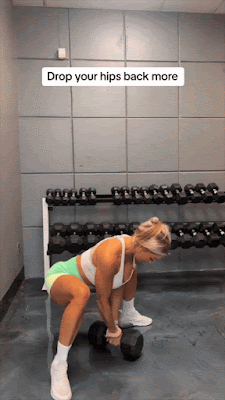What Muscles Do Sumo Squats Work? A Comprehensive Guide
Introduction: Sumo squats, also known as sumo squats, are a popular lower body exercise that targets multiple muscle groups. This compound movement variation is inspired by the wide stance of sumo wrestlers, hence the name. In this article, we'll delve into the specific muscles targeted by sumo squats, their benefits, proper form, and variations. Let's explore the anatomy of sumo squats and how they contribute to overall lower body strength and development.
Muscles Targeted by Sumo Squats:
Quadriceps: Sumo squats primarily target the quadriceps, which are the muscles located at the front of the thigh. These muscles are responsible for knee extension and play a crucial role in movements like squatting, jumping, and running.
Glutes: Sumo squats heavily engage the gluteus maximus, the largest muscle in the buttocks. This muscle is responsible for hip extension, abduction, and external rotation. Sumo squats help to develop strong, toned glutes, contributing to overall lower body strength and aesthetics.
Adductors: The adductor muscles, located on the inner thigh, are also activated during sumo squats. These muscles work to pull the legs inward and stabilize the hips during the wide stance of sumo squats.
Hamstrings: Although not as prominently targeted as the quadriceps and glutes, the hamstrings play a supportive role in sumo squats. These muscles, located at the back of the thigh, help to stabilize the knee joint and assist in hip extension.
Calves: The calf muscles, including the gastrocnemius and soleus, are engaged to a lesser extent during sumo squats. These muscles assist in ankle stability and provide support during the movement.
Benefits of Sumo Squats:
- Builds Lower Body Strength: Sumo squats are an effective way to strengthen the muscles of the lower body, including the quads, glutes, and adductors.
- Enhances Functional Movement: Sumo squats mimic natural movement patterns, making them beneficial for improving overall functional strength and mobility.
- Targets Multiple Muscle Groups: By engaging multiple muscle groups simultaneously, sumo squats provide efficient and effective lower body workout.
- Improves Hip Mobility: The wide stance of sumo squats helps to improve hip mobility and flexibility, which is important for various activities and sports.
- Can be Easily Modified: Sumo squats can be modified by adjusting foot placement, adding resistance, or incorporating variations like sumo squat pulses or sumo squat jumps.
Proper Form for Sumo Squats:
- Start with your feet wider than shoulder-width apart, toes pointed slightly outward.
- Keep your back straight, chest up, and core engaged throughout the movement.
- Lower your body by bending your knees and hips, keeping your weight in your heels.
- Descend until your thighs are parallel to the ground or slightly below.
- Press through your heels to return to the starting position, squeezing your glutes at the top.
- Repeat for the desired number of repetitions.
Incorporating Sumo Squats into Your Workout: Sumo squats can be incorporated into lower body workouts, full-body routines, or circuit training sessions. Aim to perform 3-4 sets of 8-12 repetitions, focusing on proper form and controlled movements. You can also add resistance by holding a dumbbell, kettlebell, or barbell.
Conclusion: Sumo squats are a versatile lower body exercise that targets multiple muscle groups, including the quadriceps, glutes, adductors, hamstrings, and calves. By incorporating sumo squats into your workout routine, you can improve lower body strength, enhance functional movement, and achieve a toned and sculpted physique. Remember to prioritize proper form, gradually increase resistance, and listen to your body's cues to maximize the benefits of sumo squats.





